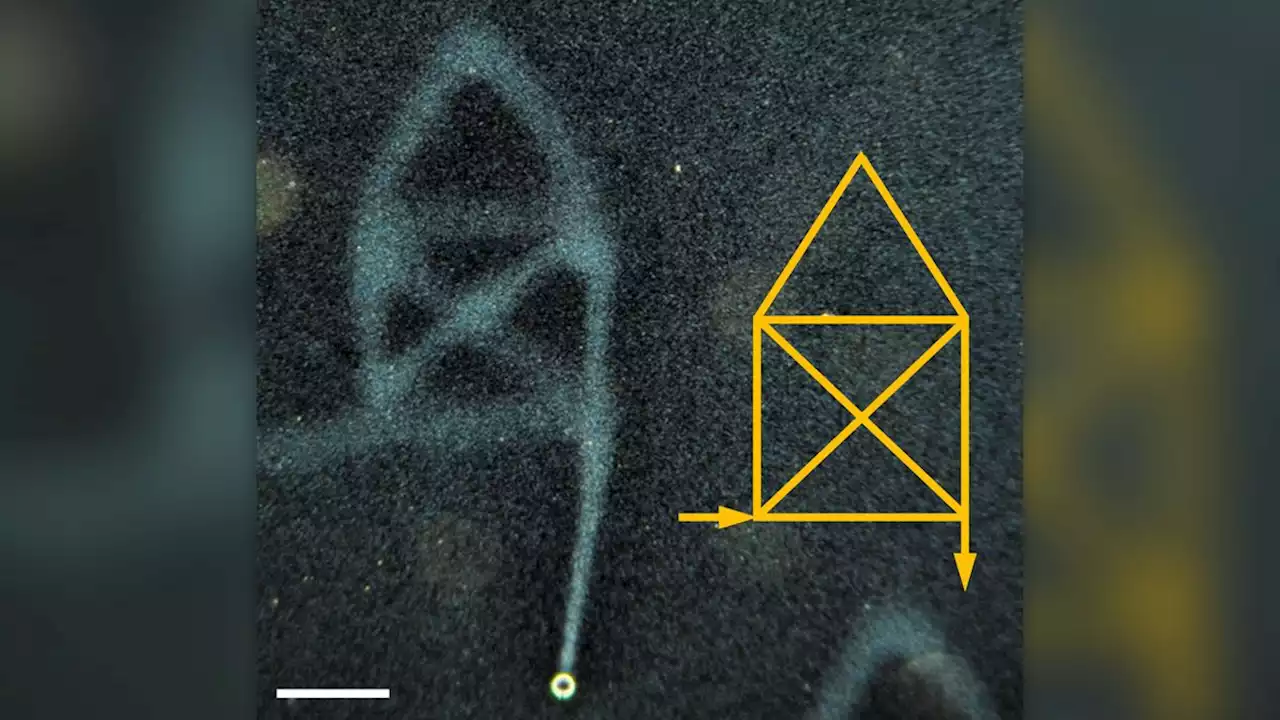Scientists are trying to understand how some ancient buildings have lasted for centuries in hopes of making modern buildings more durable.
Tourist walk through the Acropolis of Copan, an ancient Maya site in western Honduras, Sunday, Sept. 24, 2023. In Copan, intricate lime sculptures and temples remain intact even after more than 1,000 years exposed to a hot, humid environment. – In the quest to build better for the future, some are looking for answers in the long-ago past.
This reverse engineering has turned up a surprising list of ingredients that were mixed into old buildings — materials such as tree bark, volcanic ash, rice, beer and even urine. These unexpected add-ins could be key some pretty impressive properties, like the ability to get stronger over time and “heal” cracks when they form.
Even in harbors, where seawater has been battering structures for ages, you’ll find concrete “basically the way it was when it was poured 2,000 years ago,” said John Oleson, an archaeologist at the University of Victoria in Canada. Instead, after analyzing concrete samples from Privernum — an ancient city outside of Rome — the scientists found that the chunks could fuel the material’s “self-healing” abilities. When cracks form, water is able to seep into the concrete, Masic explained. That water activates the leftover pockets of lime, sparking up new chemical reactions that can fill in the damaged sections.has found that the key could be in the specific volcanic materials used by the Romans.
The masons suggested using extracts from local chukum and jiote trees in the lime mix. When researchers tested out the recipe — collecting bark, putting the chunks in water and adding the resulting tree “juice” into the material — they found the resulting plaster was especially durable against physical and chemical damage.
México Últimas Noticias, México Titulares
Similar News:También puedes leer noticias similares a ésta que hemos recopilado de otras fuentes de noticias.
 How are ancient Roman and Mayan buildings still standing? Scientists are unlocking their secretsScientists are trying to understand how some ancient buildings have lasted for centuries in hopes of making modern buildings more durable
How are ancient Roman and Mayan buildings still standing? Scientists are unlocking their secretsScientists are trying to understand how some ancient buildings have lasted for centuries in hopes of making modern buildings more durable
Leer más »
 For 1st time, scientists write words in liquid waterScientists used a process called 'diffusioosmosis' to write words that lingered in liquid water.
For 1st time, scientists write words in liquid waterScientists used a process called 'diffusioosmosis' to write words that lingered in liquid water.
Leer más »
 Brazil's diversity makes country a testing ground for a global stem cell biobank, scientists sayA biobank for all, in which a person from any background could find a bone marrow donor for a stem cell transplant, is a major goal for stem cell science. While repositories of cell lines that could be a match for most patients are successfully materializing in some countries with genetically homogenous populations like Japan and the United Kingdom, how many more we need for a universal solution remains unknown. Researchers estimate at least 559 distinct cell lines would be required to cover 95% of the more diverse, and globally representative, people of Brazil.
Brazil's diversity makes country a testing ground for a global stem cell biobank, scientists sayA biobank for all, in which a person from any background could find a bone marrow donor for a stem cell transplant, is a major goal for stem cell science. While repositories of cell lines that could be a match for most patients are successfully materializing in some countries with genetically homogenous populations like Japan and the United Kingdom, how many more we need for a universal solution remains unknown. Researchers estimate at least 559 distinct cell lines would be required to cover 95% of the more diverse, and globally representative, people of Brazil.
Leer más »
 Viruses lurking in giraffe and lemur poop could lead to new antibacterial drugs, scientists sayScientists uncovered viruses that infect bacteria, called bacteriophages, in animal poop and are testing whether they could work as antibiotics.
Viruses lurking in giraffe and lemur poop could lead to new antibacterial drugs, scientists sayScientists uncovered viruses that infect bacteria, called bacteriophages, in animal poop and are testing whether they could work as antibiotics.
Leer más »
 Scientists Discover Source of Mysterious Alignment of Stars Near the Galactic CenterScientists from The University of Manchester and the University of Hong Kong have found a source for the enigmatic alignment of stars close to the Galactic Center. The initial discovery of the alignment of planetary nebulae was made a decade ago by Bryan Rees, a Manchester PhD student, but has re
Scientists Discover Source of Mysterious Alignment of Stars Near the Galactic CenterScientists from The University of Manchester and the University of Hong Kong have found a source for the enigmatic alignment of stars close to the Galactic Center. The initial discovery of the alignment of planetary nebulae was made a decade ago by Bryan Rees, a Manchester PhD student, but has re
Leer más »
